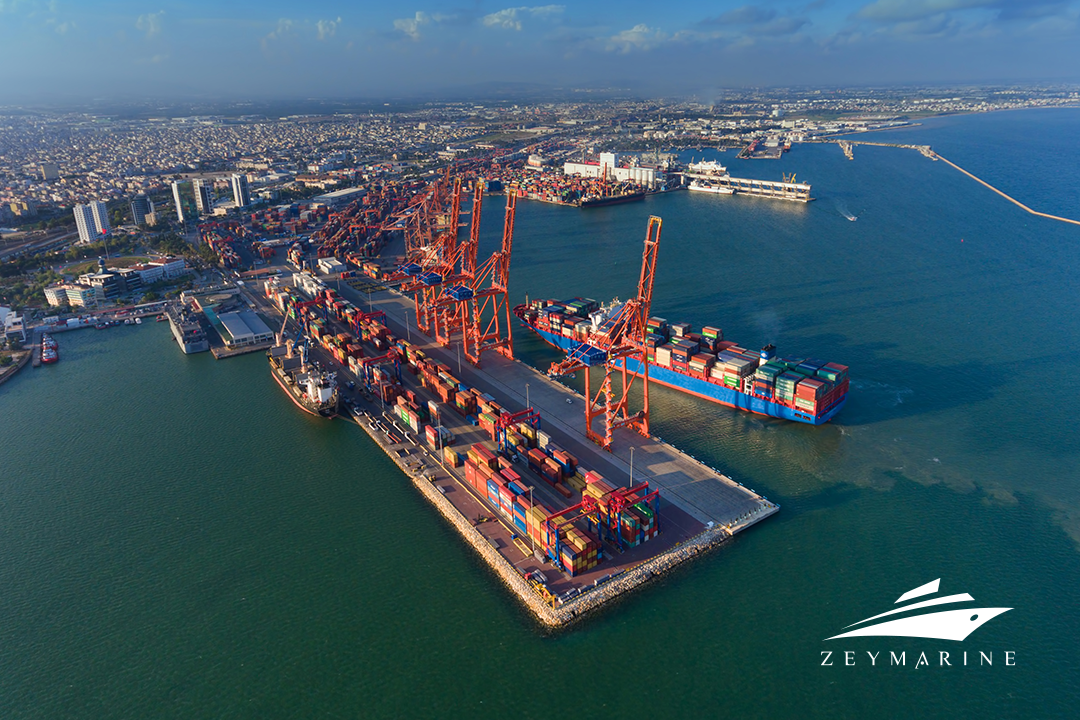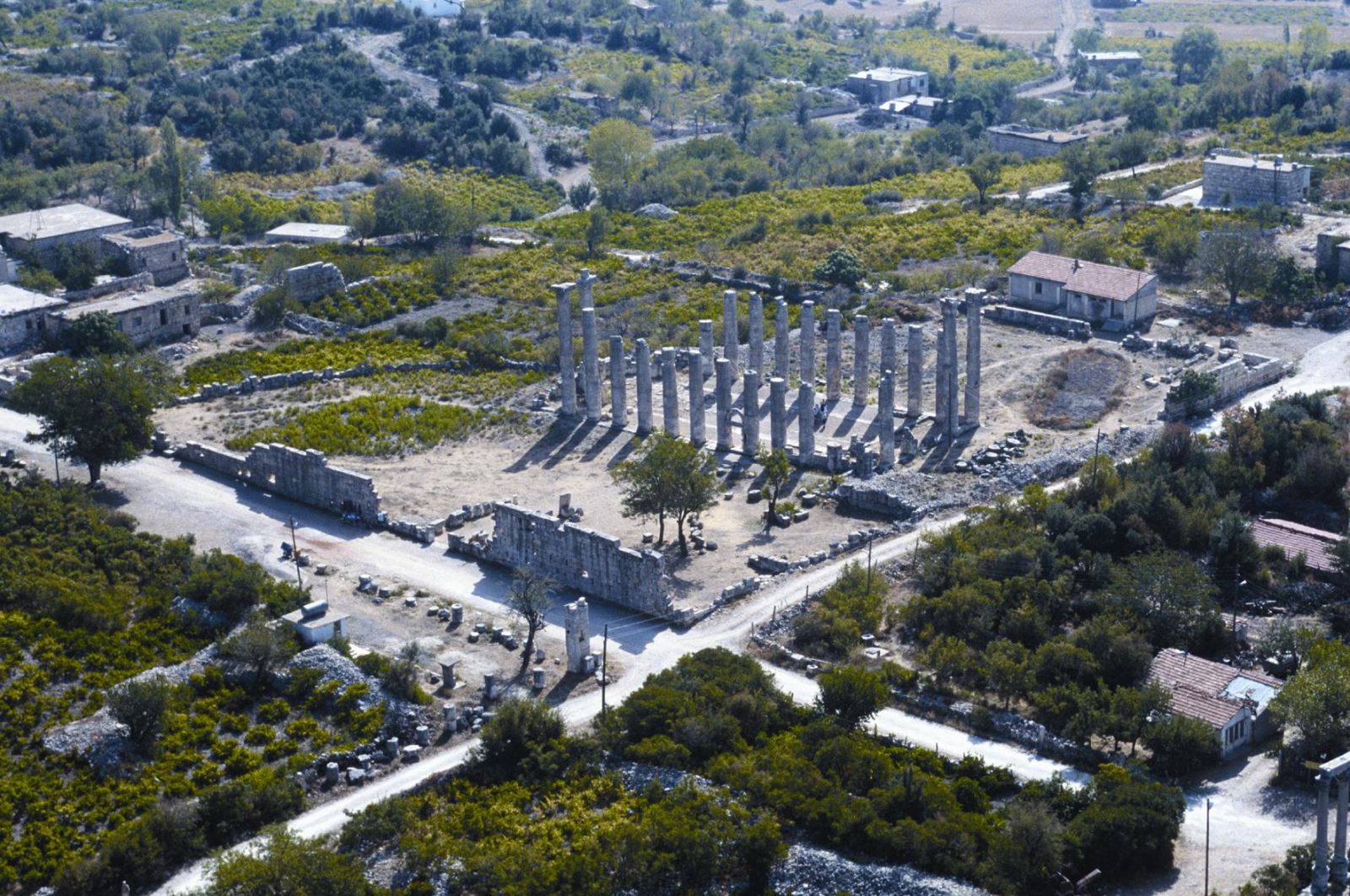Mersin is the next stop on this journey to port cities. Mersin, one of the most important ports of the Mediterranean, has an intriguing call with its historical and visual richness.
History of Mersin
There are two commonly acknowledged theories regarding the origin of the name Mersin. Firstly, the Myrtus-Mersin tree, which is a Mediterranean introduction plant and is also known as Hambales by the Arabs, is the reason the region was named Mersin. The second theory holds that a Turkmen family known as “Mersinoğulları or Mersinoğlu” who lived in this area is the source of the name Mersin.
Mersin, known as Cilicia in classical times, has a long history as a significant colony dating back to prehistoric times.
The Neolithic Period was found to be the lowest layer during the excavations at Yumuktepe and Gözlükule. The area had a transition between the Mining Age and the Bronze Age following the Neolithic Period.
After being overrun by the Entente States in World War I, Mersin was once more under Turkish control on January 3, 1922, following the War of Independence.
Mersin as a Port City
Mersin’s rise to prominence as a port city in the 19th century is often linked to the American Civil War. Due to the region’s scarcity, cotton became a vital commodity during the American Civil War in order to meet the enormous demand. A pivotal moment in the history of the city occurred when Mersin began to supply a portion of the cotton.
Widely connected by roads and railroads, Mersin Port boasts an extensive hinterland. Container, general cargo, project cargo, Ro-Ro, dry bulk and liquid bulk cargo, passenger, and ship-to-container direct bulk cargo services are available for all kinds of freight owing to the abundant facilities at the port. The biggest multipurpose port in Turkey, Mersin Port, offers all port services in one location.
Depending on the size of the ship, the port’s 21 berths can handle the loading and unloading of up to 30 vessels simultaneously. More than 30 million tonnes of goods can handled in the port.
Attractions in Mersin
Mersin is a city of unique natural beauty, particularly notable for its caves and waterfalls.
Köşekbükü Cave is one of the most beautiful caves in Mersin. It is thought to have been formed in the third geological period. The intensive karstic structure in the Central and Western Taurus Mountains has caused such cave formations to be seen frequently.
One of Mersin’s most well-known caves, Cennet Cehennem (meaning “hell and heaven” in Turkish), is distinguished from the others by its own special qualities and offers tourists a glimpse inside a natural marvel.
The Cennet Cehennem Caves are situated in Mersin’s Silifke district, close to Narlıkuyu. It got its name from these caverns that were created by a sinkhole construction that was there naturally.
Additionally, the Church of the Virgin Mary, distinctive within the cave complex, captivates visitors with its rich historical background and intense devotion to the Virgin Mary.
28August2024-PortCitiesİzmir-Zeymarine
Kızkalesi (meaning ‘Maiden Castle’ in Turkish) is one of the most beautiful castles in Turkey. Located on an island, the castle has been named in numerous legends. Strabo claims that pirates used the island back in antiquity. However, Alexios I Komnenos of the Byzantine Empire most likely constructed the citadel following the First Crusade. Leo I and at least one other Armenian Kingdom of Cilicia monarch greatly restored it in the 13th century.
Mersin has picturesque waterfalls such as Ilısu and Yerköprü. These waterfalls are also inseparable parts of the city with their scenery and peaceful environment.
One of the most picturesque locations in the city is where Mamure Castle is situated. The Romans constructed the castle in the third century to keep an eye on the trade routes between the Mediterranean and Cilicia and to defend trading vessels from pirate attacks.
The ruins of the ancient city of Diokaisareia can be seen at Uzuncaburç, an archaeological site in Mersin.
Culture of Mersin
Tantuni, which is deliciously eaten all over Turkey, is a dish originating from Mersin. Tantuni is a classic street food dish made of thinly sliced lamb or beef that is cooked with onions and tomatoes and seasoned with Turkish herbs and spices. The dish is typically served rolled in lavash with a lemon wedge and ground sumac on the side.
Yuvarlama çorbası, a Turkish soup that requires a lot of work, is cooked with yogurt broth, olive oil, chickpeas, seasoned meatballs, and other optional seasonings. It is very popular and originated in Mersin.
Turkish dessert cezerye has its origins in Mersin. Caramelized grated carrots, sugar, and nuts like walnuts or pistachios are used to make it.
Mersin is an important coastal city in Turkey, with a coastline of 321 km. Approximately 108 km of Mersin’s coastline consists of natural sandy beaches. Having important historical and touristic places, Mersin has started to make a name for itself in tourism in recent years.
The city is also a very important center for sports. In 2013, the Mediterranean Games was held in Mersin.


.jpg)



%20%20%20Kopya.JPG)










